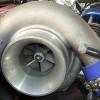Two.06l Update (twoogle)
Announcements
-
Similar Content
-
Latest Posts
-
140-150 across the board. At this point hoping the grounding harness fixes it. My grounds are all tied to the chassis and none to the battery. For SR and KA that’s never been a problem for me but had a few other guys here and Reddit who told me RB really like a very solid ground setup tied to the battery so going to try that next, I’m stumped if that doesn’t do it. Never had a car have spark and fuel and not fire off before. Only thing I can think is the spark is intermittent/weak because of grounds nothing else really makes sense at this point
-
By Nightmare_mistress_R33 · Posted
I am having close to the same issue. Can you help me with what wire you grounded to get your pump to trigger? -
If you are getting that sort of fuel usage, you might as well be back in the stagea
-
Looks good mate, those stainless lines must be a bastard to do neatly. Better get it to a track again sometime soon, I'm doing to Wakie day next Wednesday to see if the v37 likes cool weather better than hot weather....








Recommended Posts
Create an account or sign in to comment
You need to be a member in order to leave a comment
Create an account
Sign up for a new account in our community. It's easy!
Register a new accountSign in
Already have an account? Sign in here.
Sign In Now